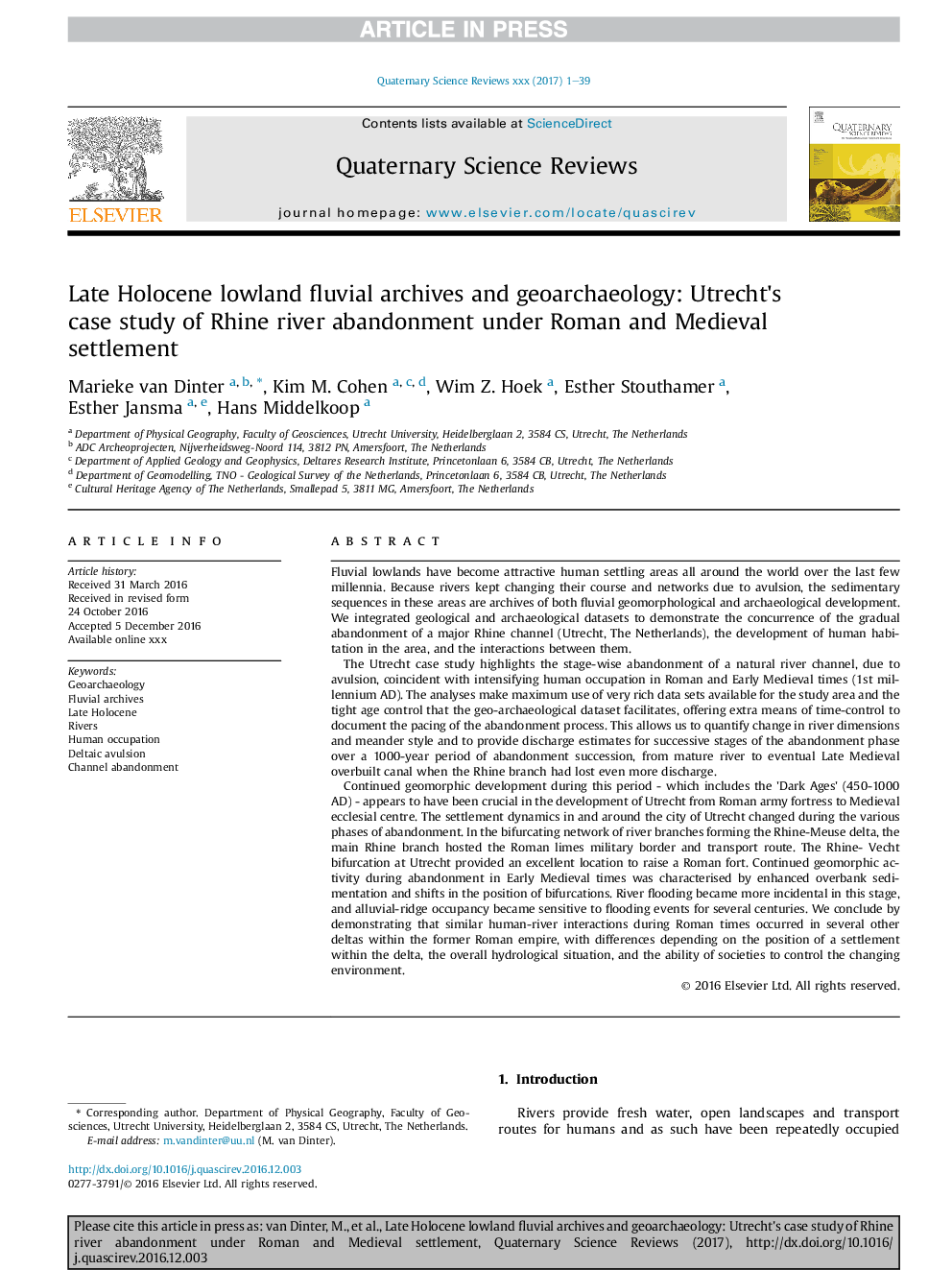| Article ID | Journal | Published Year | Pages | File Type |
|---|---|---|---|---|
| 5786722 | Quaternary Science Reviews | 2017 | 39 Pages |
Abstract
Continued geomorphic development during this period - which includes the 'Dark Ages' (450-1000 AD) - appears to have been crucial in the development of Utrecht from Roman army fortress to Medieval ecclesial centre. The settlement dynamics in and around the city of Utrecht changed during the various phases of abandonment. In the bifurcating network of river branches forming the Rhine-Meuse delta, the main Rhine branch hosted the Roman limes military border and transport route. The Rhine- Vecht bifurcation at Utrecht provided an excellent location to raise a Roman fort. Continued geomorphic activity during abandonment in Early Medieval times was characterised by enhanced overbank sedimentation and shifts in the position of bifurcations. River flooding became more incidental in this stage, and alluvial-ridge occupancy became sensitive to flooding events for several centuries. We conclude by demonstrating that similar human-river interactions during Roman times occurred in several other deltas within the former Roman empire, with differences depending on the position of a settlement within the delta, the overall hydrological situation, and the ability of societies to control the changing environment.
Related Topics
Physical Sciences and Engineering
Earth and Planetary Sciences
Geology
Authors
Marieke van Dinter, Kim M. Cohen, Wim Z. Hoek, Esther Stouthamer, Esther Jansma, Hans Middelkoop,
